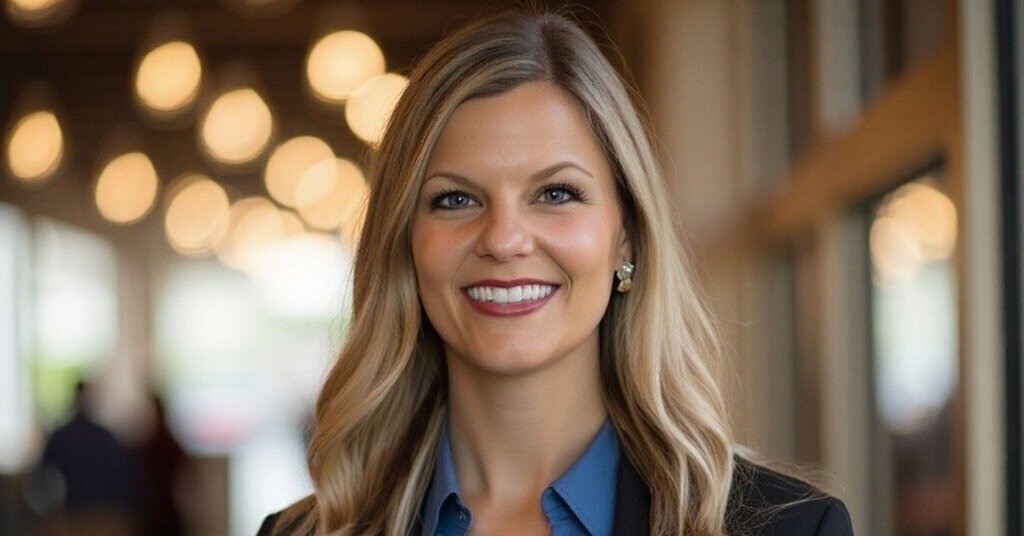Nurturing the Garden: Neighborly's CMO Balances the Unique Needs of 19 Brands

Mega home services platform brand Neighborly operates 19 brands across North America, working with thousands of franchise locations that serve millions of customers. That would be a challenge for any seasoned marketer, but CMO Stacy Lynn Bourgeois approaches the situation with a metaphor.
She sees herself as a gardener of a diverse brand ecosystem where she must nurture all 19 brands based on their unique needs while cultivating a unified, thriving portfolio. The approach reflects her belief in balance between individual brand autonomy and system-wide cohesion, between data and intuition, and between performance and purpose.
Bourgeois joined Neighborly following a stint at Amazon, where she grew from marketing into broader business leadership roles, including global head of product, quality, and operations for Amazon Renewed. While with the online retail giant, she led initiatives to boost discoverability of preowned products, improve conversion and customer experience, and streamline operations.
She has a reputation for being customer focused and for driving double-digit growth across a range of initiatives. While with Yum! Brands, she helped launch new products and a restaurant concept, built teams in performance marketing and data science, and implemented a new marketing tech stack.
With almost a year under her belt at Neighborly, Bourgeois says, “Our marketing and branding strategy is grounded in the customer.” The strategy is developed collaboratively using real-world insights to craft brand-specific plans. It’s then refined by marketing leadership into a cohesive, purpose-driven strategy that aligns with the company’s long-term vision. It is then executed through annual plans and tactics.
As the gardener, Bourgeois says, “The goal is to help each brand grow strong individually and stay true to its roots yet flourish as part of a vibrant, unified landscape that attracts customers and empowers our franchise owners.”
Describe your role as CMO. Being a CMO for Neighborly is like being a gardener with a diverse garden. Each brand is distinct: Some are mature oaks, and others are seasonal vegetables or budding flowers. They all require some of the same fundamentals: sun, water, soil. But each requires unique care and a slightly different environment to thrive.
What’s the most challenging part of being a CMO today? The biggest challenge—and simultaneously, the most exciting part—is the speed of change. Marketing today is more dynamic than ever: Customer demands, communication channels, and the technology we use to do it all are all evolving rapidly. And while that creates opportunities for innovation, it also requires constant adaptability. There’s this pressure to stay ahead of the curve, to keep your brand not just relevant, but truly on the cutting edge. When I first got into this field, I thought things moved quickly, but today, it’s on a completely different level. But that’s also what drew me in and made me fall in love with marketing; it keeps you on your toes.
What are the three most important keys to being an effective CMO leader today?
- Supporting a diverse franchise network. CMO leadership in a franchise system means supporting a wide spectrum of owners. Our network ranges from first-time, small-business owners trying to break even to large, multi-brand, multilocation operators. Each has very different needs, so being able to provide the right marketing tools, resources, and guidance tailored to where they are in their growth journey is essential.
- Being a change agent. Marketing must lead through change, supporting internal and external stakeholders. As marketing becomes increasingly interconnected with tech, CMOs must drive innovation and lead teams through constant evolution.
- Demonstrating business impact. Connecting marketing activity and investments directly to business outcomes is key. Marketing is a revenue engine, not a cost center, so it’s important that the team understands how their efforts contribute to growth and that we can measure the results of our investments.
How do you prepare a marketing plan and execute the strategies? It starts with customer centricity and listening to customer needs to guide strategy. With 19 different brands, it’s not one size fits all. Each brand serves a different audience with different services, so the planning process starts at the brand level. Those individual plans roll up into a broader, cohesive strategy that brings alignment and continuity across the portfolio while still allowing each brand the flexibility to do what’s right for their customers. But it always goes back to the customer.
How do you measure marketing results and effectiveness? At a high level, it’s important to view marketing as an investment, and hence, effectiveness is measured in terms of return on that investment. There are plenty of data models and tools we use behind the scenes, and the approach is very much a blend of art and science. Ultimately, it’s about striking the right balance between the numbers and the bigger picture to drive meaningful results.
Discuss your core consumer marketing strategies and objectives. Our core consumer marketing strategy focuses on being ridiculously easy to do business with, which helps us earn customer trust and drive same-store sales growth. We aim to be the most trusted and value-added marketing team supporting our franchisees. At the same time, we are committed to building the most comprehensive data asset in franchising to enable best-in-class marketing. Lastly, we strive to become the most sought-after destination for top marketing talent, ensuring we continue to innovate and lead in the industry.
How do you go about creating a customer-centric marketing and brand philosophy? It begins with listening to the customer through data, insights, and direct feedback. Marketing is not just lead generation. Throughout my career, from data science to marketing, the common thread has been understanding customer pain points and figuring out how we can better serve them. From there, the focus shifts to how the brand can uniquely address those needs. The goal is to consistently deliver on those pain points that set the brand apart and truly resonate with customers.
Describe your marketing team and the role each of them plays. Our marketing team is really made up of two key groups. Half of the team is dedicated to a brand. They know their brand’s customers inside and out and work closely with our franchise owners, coaching them on what it takes to grow and succeed. The other half consists of centers of excellence, which focus on specialized areas like SEO and paid search. These experts bring deep knowledge of their respective fields. Together, these two sides collaborate to deliver the most value for our owners and the business as a whole.
Why is it so important for the marketing department to have a personal touch when it comes to helping the brand connect with franchise prospects? At Neighborly, we believe that every franchise prospect is evaluating not just a business opportunity, but a relationship. A personal touch from marketing ensures prospects feel heard, seen, and valued from their first interaction with us and throughout the whole mutual evaluation process. We have built our company and brands on a foundation of trust and service, and this begins with how we communicate throughout the process. Personalized franchise marketing helps us tailor messages to match the motivations, goals, and concerns of a prospective new owner, making it easier for them to form a genuine connection with Neighborly that sets the tone for their long-term success.
How does this help your franchise sales and development effort? Personalizing our franchise development marketing helps us accelerate trust, increase lead engagement, and improve our conversion rates. Neighborly prospects receive relevant, brand-specific content that speaks to their needs, whether they’re looking for a career change, investment opportunity, or purpose-driven business. Our franchise development marketing efforts also enable our franchise development team to have more meaningful conversations because we’ve already created familiarity with our values and differentiators. Aligning franchise candidates early on helps them move through the mutual evaluation process efficiently and with greater confidence in our brands, our company, and themselves.
What ways/tools do you rely on to do this? At Neighborly, we use a variety of tools to support franchise development, including CRM automation, segmentation strategies, and behavior-based triggers to make sure we are delivering the right message at the right time to franchise prospects. Platforms like HubSpot, Meta, Google, LinkedIn, and YouTube help us track interest levels and personalize our follow-up communications. We also rely on video storytelling, journey mapping, and tailored materials to bring our brands to life for potential franchise owners. Whether it’s through engaging webinars or personal outreach from our brand leaders and current owners, we focus on making every interaction feel genuine and personalized. We always strive to humanize and personalize the experience with franchise prospects while maintaining scale.
Do today’s prospects expect more from the franchise marketing department? What, and how do you provide it? Yes. From a franchise development marketing perspective, I think today’s franchise prospects are more informed and discerning. They not only want, but expect a curated experience. Prospects want transparency, adequate content, and easy access to proof points, like validation, earnings potential, and support systems. People today are busy, and they want quick, helpful responses and a journey that feels both professional and personal. At Neighborly, we work diligently to meet those expectations by investing in high-quality digital content, targeted lead-nurturing campaigns, and responsive, human-centered communications throughout the whole franchise development process. Whether it’s through branded emails, virtual tours, or personal conversations with our existing Neighborly brand franchise owners, we want to make every interaction a reflection of our culture and value proposition. At the end of the day, we have a success story to share, and we want future franchise owners to picture themselves as part of our story.
From the consumer marketing perspective, customers are looking for a seamless experience that meets them where they are. It’s all about the right message at the right time. Because of the proliferation of information out there, customers can’t sift through it all, so it’s more important than ever to be relevant with your messaging to break through. Customers have also raised the bar for how they expect us to communicate with them because they know they’ve given us the data, so it’s on us to add value for them.
How is today’s consumer and marketing data helping you fine-tune your marketing initiatives? Today’s consumer and marketing data play crucial roles in helping us understand our customers’ journeys and experiences with our brands. It highlights where we might be falling short and uncovers opportunities to improve. This insight allows us to engage more thoughtfully rather than overwhelming customers. By focusing on delivering the right message to the right person at the right time, we make our marketing more relevant and meaningful.
Describe the evolving role of social media in your brand’s marketing efforts. Social media is an effective tactic for reaching our audience and generating leads efficiently. It’s important to be where our customers are, and social media is one of those places. The role of social media continues to evolve, especially as AI comes out and relies heavily on human-created content for its answers. Social media platforms like Reddit, which have human-generated content, have become more important. The shift is moving away from brands simply telling their story to providing customers with nuggets about the brand and letting them tell the story themselves.
How do you work with other internal departments, and does technology help? Technology is embedded and intrinsic in everything we do as a marketing department. Marketing departments today spend more on technology than technology teams in some companies. I’m a huge believer in collaboration and partnerships across marketing, technology, operations, and other departments. When we communicate well, it ensures that together we build the right thing. For example, what you want to avoid is marketing wanting to create a swing, finance thinking it’s a tire swing, IT is building a rocket swing, and no one checks with operations, so the swing doesn’t even work. That collaboration is so important to make sure we’re building what our customers want and what will move the business in the right direction. One specific action to help foster this culture is designating single-threaded owners on initiatives, paired with representatives from all the core departments to make sure every department’s voice is represented. At the same time, we are really clear on the owner who is driving it forward.
Which technology tools are most valuable to you and why? I think the reality is that technology is becoming more and more of a commodity. The most fundamental and critical tool isn’t a tool at all; it’s our first-party data. That’s where we differentiate our experience and create enterprise value for the business and our owners. To me, that’s the most important piece of the technology stack, making sure we’re leveraging data in everything we do to best serve our customers.
How do you stay on top of changing technology? We’re leaning into AI and how it’s creating opportunities in media optimization, modeling, and customer engagement. It has already started to change the way people search for and discover service providers like our brands and, ultimately, how they book and manage appointments. There’s no perfect way to stay on top of changing technology. We lean on our agencies, we lean on our partners, and most importantly, we’re all really intellectually curious. I listen to tons of podcasts and news and just try to stay connected to what is happening. Our team is 140 people strong and all incredibly curious, and that helps expand our knowledge in a way that’s far more powerful than relying on any one individual.
How do you manage costs and budgets for the marketing department? Every dollar the marketing department spends is evaluated to understand the return on investment for our owners and the business. As we continue to grow as a company, we’re always looking for ways to drive efficiency. It’s a fragmented industry, but we look to leverage Neighborly’s scale to create those efficiencies and deliver them back to our owners.
Do you see vendors as business partners? Why/why not? Absolutely. I view our core marketing vendors, agencies, and partners as a true extension of our team. We bring them in for their expertise and the unique value they add, so if we don’t invest in building strong partnerships with them, we can’t succeed. Especially with the number of brands we manage, the pace of the market, and the ambitious goals we’ve set, it’s critical that we stay in lockstep. That means treating them like team members and keeping communication open and ongoing.
How have marketing strategies/tools changed over the past decade? How have you adapted? What marketing looked like a decade ago is vastly different from what it looks like today. Everything is so dynamic now that we have to be constantly learning, moving, and staying agile. It’s about being open to continuous reevaluation. We might make the best decision for today, but tomorrow we have to be willing to reassess and ask if it’s still the right one. That’s a big shift from how things used to be, where you could set a plan and stick with it for five years. Now, it’s less about perfection and more about focusing on the impact we can make right now while staying ready to adapt again the next day if needed.
How is your marketing/branding strategy developed, and how does it flow through the system? Our marketing and branding strategy is grounded in the customer. Our brand teams take their insights and work with operations teams to shape brand-specific strategies based on real experiences, feedback, and market dynamics. Then, our heads of marketing review the input—evaluating competitive positioning, industry trends, and growth opportunities—to create a cohesive marketing strategy. This collective input supports the long-term vision that aligns with our board. It’s not about creating strategy; it’s purpose-driven and built in collaboration with our stakeholders and our customers. Once set, those strategies flow through the system, from the broader five-year vision to the annual plans and tactics each brand team develops and executes.
What advice would you offer to aspiring CMO executives? First off, congratulations on aspiring to one of the most fun, rewarding careers. As marketers, we spend so much of our time and brain space thinking about the customer and asking “why?” Take that same curiosity and intentionality to your career. Ask the five whys and ensure you know why you want the role, who you want to touch with it, and what impact you’ll make. Just like you have to be clear on your brand’s purpose, it starts with being clear on yours. Then keep the curiosity and chase your dream with grit. You’ve got this!
Share this Feature
Recommended Reading:
| ADVERTISE | SPONSORED CONTENT |
FRANCHISE TOPICS
- Multi-Unit Franchising
- Get Started in Franchising
- Franchise Growth
- Franchise Operations
- Open New Units
- Franchise Leadership
- Franchise Marketing
- Technology
- Franchise Law
- Franchise Awards
- Franchise Rankings
- Franchise Trends
- Franchise Development
- Featured Franchise Stories
FEATURED IN

Franchise Update Magazine: Issue 3, 2025
| ADVERTISE | SPONSORED CONTENT |








 The franchise listed above are not related to or endorsed by Franchise Update or Franchise Update Media Group. We are not engaged in, supporting, or endorsing any specific franchise, business opportunity, company or individual. No statement in this site is to be construed as a recommendation. We encourage prospective franchise buyers to perform extensive due diligence when considering a franchise opportunity.
The franchise listed above are not related to or endorsed by Franchise Update or Franchise Update Media Group. We are not engaged in, supporting, or endorsing any specific franchise, business opportunity, company or individual. No statement in this site is to be construed as a recommendation. We encourage prospective franchise buyers to perform extensive due diligence when considering a franchise opportunity.